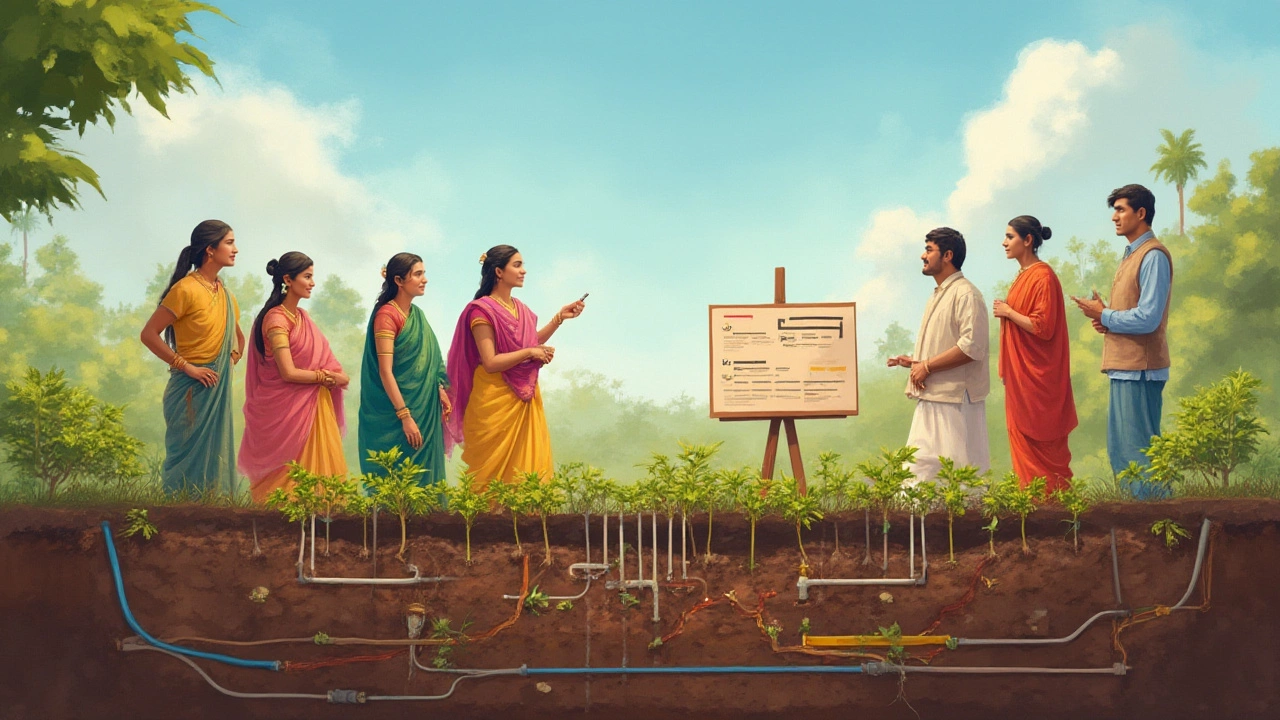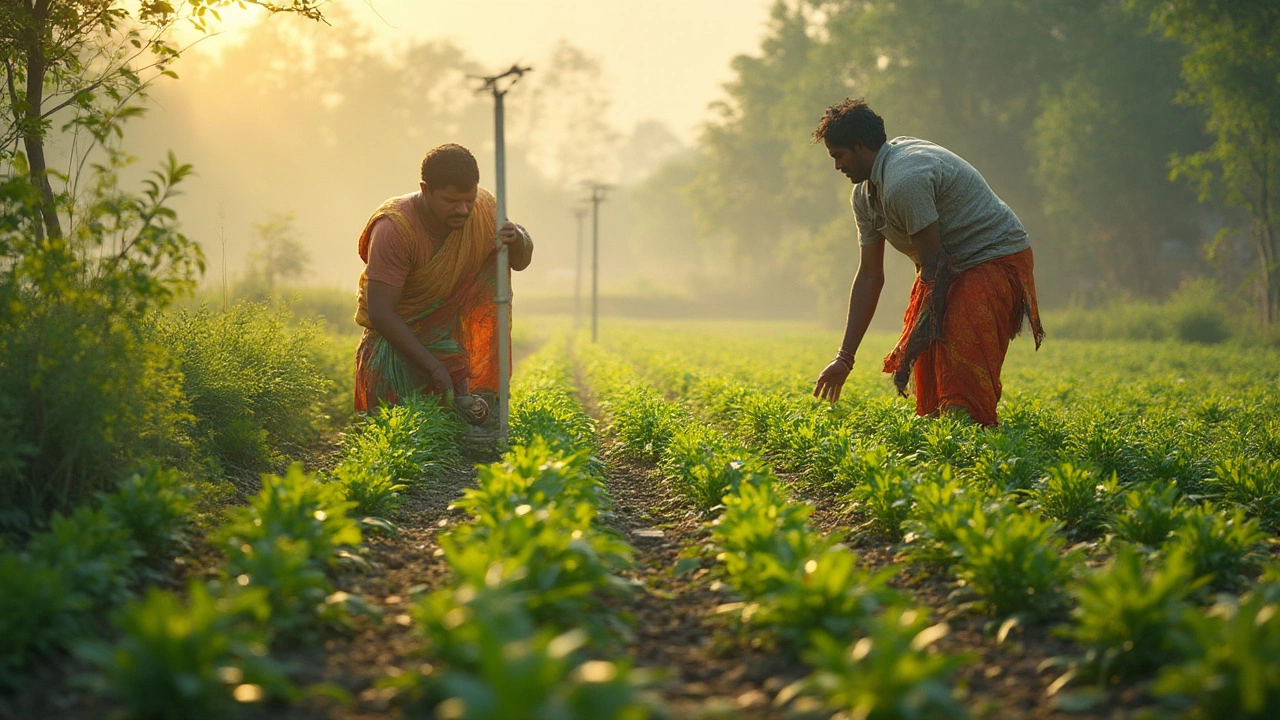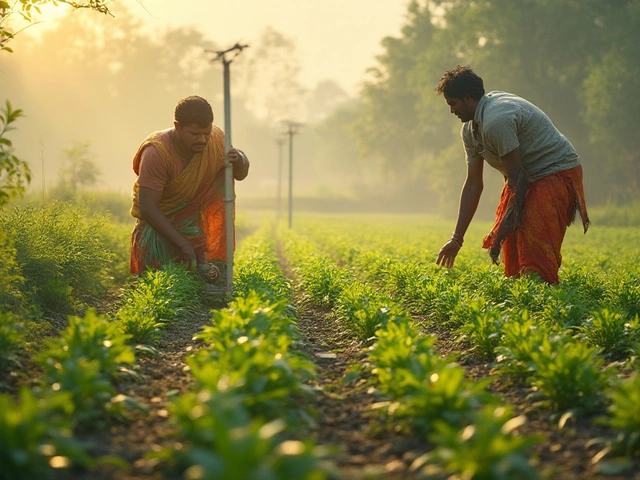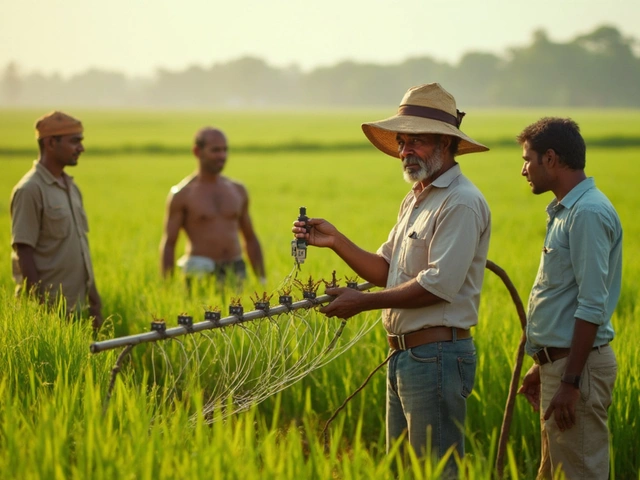Imagine living in a country with chronic water shortages, yet seeing whole fields thirsting under the blazing sun, fed by old-fashioned flooding or leaky pipes. The tech to save water—drip irrigation—is already here. Still, it’s not the norm in many places. Why aren’t more farmers, small gardeners, or even big agricultural operations jumping on the drip bandwagon? Is it stubborn tradition, high prices, or something else entirely? Or maybe it’s all wrapped up together—a mix of bad advice, missing know-how, and way too many rumors. The answer isn’t simple, but let’s dig into it.
How Drip Irrigation Works and Why It Matters
Most people hear "drip" and think boring garden hoses and little plastic tubes, but drip irrigation is bigger than that. It delivers water straight to plant roots, drop by drop. No splashing, no wasted puddles, just the right amount where it counts. The results? Less water used—studies from the Food and Agriculture Organization seriously suggest farmers can cut water use in half—and healthier crops. Tomatoes, grapes, cotton, lettuce, name it: they all thrive when the soil stays damp but not soggy, and roots aren’t drowning in mud.
Compare that with classic flood or sprinkler setups. In some places, only about 30%–40% of the water sprayed even reaches the intended roots. The rest? Gone, lost to the air or ground. Drip offers steady soil moisture, which means fewer weeds (because you’re not watering bare earth) and less disease (since leaves stay dry). Healthier plants, fewer weeds to yank—sounds like an easy decision, right?
People often forget drip can work just about anywhere—urban rooftops, sprawling orchards, tiny kitchen gardens. NASA even used it aboard space stations in plant experiments. There’s a reason Israel and California made it their signature trick to grow crops in deserts. But let’s be honest, most farmers across India, sub-Saharan Africa, and even the US Midwest are still using age-old watering systems. So, if the drip irrigation advantage is so clear, what’s holding everyone back?
The Real Barriers: Cost, Tools, and Skepticism
The first roadblock hits in the wallet. Drip systems promise savings down the road, but that upfront cost for hoses, filters, emitters, and timers stings—$500 to $1,200 per acre in materials and setup, according to the University of Nebraska. For a small farmer or somebody scraping by in a developing country, that’s brutal. Some places have government subsidies, but paperwork can be a nightmare, and corruption sometimes eats up what should go to hardworking growers.
Now layer on the hidden costs: maintenance. Those tiny holes in emitters love to clog up with hard water minerals, algae, or bits of dirt. A farmer who’s always had success with old-fashioned canals has to learn a new round of pipe flushing and filter cleaning—or spend more money hiring someone who knows how. Fixing leaks, replacing flimsy tubes chewed by mice, and keeping water tanks topped up means drip can start feeling like more hassle than help, especially if parts aren’t for sale in the local market.
Let’s not skip over tradition, either. Changing how you water peanuts or cucumbers isn’t just about logic; it’s about trust. Plenty of folks watched a neighbor struggle with second-hand drip kits that broke, or heard tales of massive tomato losses after trying a new system in the middle of summer. In some rural villages, there’s even a belief that newfangled watering won’t give “sweet” fruit or will ruin the soil for generations. Where advice is handed down over chai more than YouTube, old beliefs have staying power.
Look at the numbers: in India, where water shortages are headline news every May, only about 10% of farmland uses drip or micro-irrigation, and in Africa, it’s often way less. The US, even with the world’s best tech, only uses drip on maybe 5% of irrigated fields, mostly in California, Arizona, and Florida—places you’d expect. Poorer, more remote regions see almost none.

Common Myths and Mistakes About Drip Irrigation
If you hang around online forums or chat with farmers at the local seed shop, the same complaints about drip irrigation always come up—and half of them aren’t true. One classic: "Drip is only for rich farmers or big farms." Wrong. There are super-basic gravity-flow kits now for smaller plots that cost under $40. Another: "Drip systems waste more water if not done right." Actually, mismanaged surface irrigation leaks huge amounts, but drip just needs decent setup.
People say, “Drip won’t work if your water has lots of sand or silt.” Truth is, good filters keep the pipes clear, and many setups have self-cleaning emitters. Yes, if you mix in fertilizer, the chemicals can clog pipes—so add inline filters and flush at season’s end. Some folks panic about plastic waste, since most tubing won’t last forever. Companies now offer recyclable or bio-based lines, and you can extend tube life with simple shade or by burying it a few centimeters underground.
Let’s demystify planting, too: you can use drip for almost anything with roots. It's not just for gardens—think fruit orchards, greenhouses, or vertical urban farms. With the right layout, you can sneak drip tubes under hay mulch or run them up a wall for strawberries. The key mistake? Setting and forgetting. Drip’s big promise—water on-demand—only works if you actually tweak the schedule for changing weather or plant growth. Too many folks set the timer once, then blame the system if tomatoes wilt after a 100-degree day.
Making Drip Work: Tips, Tech, and Bright Spots
If you want drip irrigation to pay off, a few practical steps make all the difference. Start small: test a single row or a kitchen garden first, figure out what breaks, and adjust as needed. Always filter the water first—even a cheap kitchen filter helps. Lay pipes at dawn or dusk when it’s cooler to stop them warping or getting pinched, and check for leaks with each season change.
Timers and sensors are getting cheaper every year. Bluetooth and solar models are a hit even in places with spotty electricity. Companies now offer phone apps to control watering from anywhere and send an alert if a line breaks. San Diego farmers, faced with drought and high water bills, are using drip plus sensors to track soil moisture, cutting their bills by a third. In smallholder parts of Kenya and India, gravity-fed “bucket kits” now help families grow fresh food even through dry spells.
Some aid groups hand out detailed guides—complete with pictures—to explain the basics, from flushing lines to cleaning filters. Urban farmers have started swapping used drip parts online, and commercial suppliers in Egypt, Spain, and Texas now joke that “drip is the future,” since aquifers are running low everywhere.
Here’s a tip: keep a weekly log of water use and harvest size. Even a notebook helps spot if the system needs more or less water. Change the filter with each season, and patch holes quickly—critters love plastic in winter. For eco-minded growers? Look for UV-stabilized piping and ask dealers about recycling programs. Want to boost success? Pair drip with mulch. A few cm of straw slashes water loss and keeps weeds down.
If you’re worried about budgets, see if your local ag department, garden club, or a state agriculture university has a loan kit or trainer—they’re everywhere now. Some companies even rent systems for a season, perfect if you’re just looking to try before buying.
| Country | Fields Using Drip (%) | Avg. Water Saved (%) | Crop Yield Increase (%) |
|---|---|---|---|
| Israel | 95 | 60 | 30 |
| India | 10 | 40 | 20 |
| United States | 5 | 35 | 15 |
| Spain | 25 | 50 | 20 |
| Egypt | 12 | 45 | 17 |
The numbers don’t lie—countries betting big on drip are seeing less water waste and bigger harvests. The big challenge isn’t just buying new pipes; it’s changing habits, busting myths, and making sure help is on hand if something clogs up. But with droughts hitting harder each year, the drip revolution is coming whether we’re ready or not.




